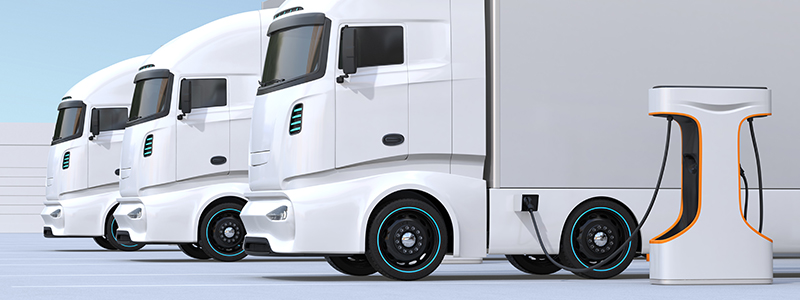Commercial transportation companies are scrambling to meet California’s upcoming Jan. 1, 2024 mandate that all new trucks purchased for servicing ports, rail yards, and distribution centers in the state be zero-emission vehicles, with experts questioning limited access to charging stations and the viability of switching from diesel to electric fleets.
Availability of electric semi-trucks is a concern, as is the price of the vehicles, the number of miles they can go on a charge, and the cost of maintenance and replacement parts, all of which currently remain unknown variables, according to industry experts.
Charging is problematic on several fronts, as trucks require special charging stations, and with limited infrastructure at and near ports, experts say the frequent need to recharge, and the wait times expected with more trucks than charging ports, add to the time and cost of operation.
Traditionally, maintenance accounts for the majority of expenditures with diesel trucks, and the lack of information regarding similar requirements for electric vehicles presents unique challenges for logistics companies.
The price of most electric semi-trucks is approximately $500,000, based on listings for new models, and Tesla is seeking to gain market share by undercutting the price, with models ranging from $180,000 and up.
Availability is considerably different between electric and diesel. Fleet owners have their choice of manufacturers for traditional trucks, while extremely limited production has electric counterparts on backorder in many instances.
With 10,000 drayage trucks—those that access ports and railyards—reportedly replaced on average each year, the newly imposed mandate will create demand that manufacturers will be unable to supply, based on current production standards. Only a handful of trucks are available at a time, with supply substantially trailing demand.
Efforts are underway to increase production at facilities in Southern California and Nevada, but transportation professionals expect difficulty buying or leasing the trucks by the time the laws take effect.
This is something trucking firms are being forced to do but is literally impossible in the current environment, as there are not enough trucks or enough charging stations. On top of that, carriers would be wise to have fleet management platforms that provide battery State of Charge.
Industry experts say the estimated 10,000-pound battery pack installed in Tesla trucks is also potentially an issue because replacements would be difficult and costly and lead to less cargo being carried due to laws pertaining to weight limits. They additionally report no success when requesting details from the manufacturer regarding specifics.
Weight of the vehicles is another concern, as the battery packages powering electric trucks cause them to weigh substantially more than standard trucks, and laws regulating weight limits on roads means a heavier truck can carry less cargo, hence less profit for the carrier, according to transportation experts.
Packing a truck is how truckers make money. If they’re limited by how much cargo they can carry and how far they can carry it, they can’t possibly be as efficient as they are today.
Range presents another significant obstacle, as diesel trucks can run more than 1,000 miles before refueling, while the best electric semis currently can go 300 miles or less, with the majority currently operating in California lasting only 100 miles or fewer on average, according to experts.
Reliability is also a factor affecting owners’ hesitancy to switch to electric, with questions remaining about the long-term effectiveness of the power systems, according to experts.
While many steps remain before electric trucks can replace diesel fleets in California—by 2035 all fleets must be zero emission as required by the Advanced Clean Trucks Regulation passed in 2020—and companies say many questions still need to be answered.
Be certain to do all the research you need and prepare for this mandate, and to choose the right fleet telematics provider to help you as this journey continues.







